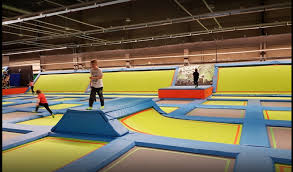Ensuring the safety of children on playgrounds is a top priority for community planners and park managers. Modern Commercial Playground Equipment is designed with a range of safety features that not only protect children but also align with stringent safety standards. Here are some of the most critical safety features that should be included in every piece of playground equipment.
Shock-Absorbing Surfacing
One of the key elements in reducing injuries from falls, which are among the most common playground accidents, is the use of proper surfacing. Materials such as poured-in-place rubber, rubber tiles, or engineered wood fiber provide essential shock absorption. According to the Consumer Product Safety Commission (CPSC), surfaces around playground equipment should be soft enough to cushion falls and reduce the risk of serious injuries. Surfaces need to extend at least 6 feet in all directions around the equipment, with extra coverage depending on the height of the equipment.
Rounded Edges and Safe Hardware
Sharp corners and exposed hardware can cause severe injuries. It's essential that all playground structures have rounded edges and recessed hardware to minimize the risk of cuts or snagging clothing. For swings, hooks and chains should be securely enclosed to prevent pinching or trapping a child's fingers.
Age-Appropriate Design
Equipment must be suitable for the age group that uses it. For toddlers and younger children, this means lower heights and structures that are easy to navigate. Older children require more challenging features but still within the safety norms. The National Program for Playground Safety (NPPS) suggests that clear signage indicating the appropriate age for each piece of equipment can help prevent accidents by ensuring that children use equipment that matches their developmental level.

Strong, Durable Materials
Durability is directly tied to safety. High-quality materials that can withstand weather, wear, and the rigors of daily use are crucial. This means rust-proof metals, UV-protected plastics, and splinter-resistant woods should be standard. Equipment should also be anchored securely to the ground to prevent tipping or movement that could lead to injuries.
Visibility and Supervision
Good playground design includes unobstructed sightlines that allow parents and guardians to easily supervise their children. This means avoiding blind spots and ensuring that there are no hidden or obscured areas within the playground layout. Adequate lighting is also important for visibility during dusk and dawn.
Regular Maintenance Checks
Even the best equipment can become hazardous without proper maintenance. Regular inspections to identify issues such as loose bolts, worn-out parts, or vandalism are essential. A maintenance checklist should include detailed checks and routines to ensure every part of the playground meets safety standards continuously.
Ensuring these safety features are a part of your playground design doesn’t just prevent injuries; it also builds a foundation of trust within the community that the recreational spaces are safe for their children. This commitment to safety can turn a standard play area into a valued community asset. When selecting equipment, prioritize these features to ensure that safety is at the forefront of your community's recreational environment.